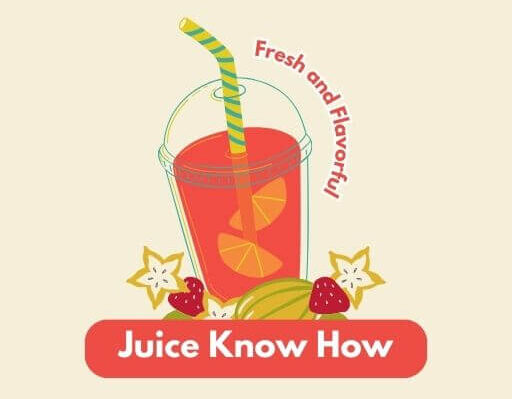Have you ever found yourself squinting at a recipe, questioning how much juice you’ll actually get from that single lemon it calls for? You’re not alone! Many home cooks and bartenders ponder this exact question. Lemons are kitchen workhorses, adding brightness to everything from salad dressings to cocktails. Knowing how much juice you can expect from one lemon is essential for successful recipes and happy taste buds. Let’s dive into the juicy details!
The Average Lemon: A Baseline Measurement
As it happens, one average-sized lemon will give you approximately 3 tablespoons of juice. If you’re looking to get the maximum amount of juice out of a lemon or other citrus fruit, there are a few tricks that can help! But, like snowflakes, no two lemons are exactly alike. Size, variety, and ripeness all play a role in the final yield. So, while 3 tablespoons is a great starting point, let’s explore the factors that can influence this number.
Lemon Size Matters: Small, Medium, or Large?
Lemons come in various sizes, and it’s no surprise that a larger lemon generally holds more juice. Here’s a breakdown:
- Small Lemon: A small lemon (around 1-5/8″ in diameter) typically yields about 2 to 3 tablespoons of juice.
- Medium Lemon: The average medium-sized lemon (around 2-1/8″ in diameter and weighing 4-5 ounces) will give you approximately 3 to 4 tablespoons of juice.
- Large Lemon: If you have a large lemon (around 2-3/8″ in diameter), you can expect to get around 4 to 5 tablespoons of juice.
Remember that these are just estimates. To be sure, it’s always best to have a few extra lemons on hand, just in case!
Lemon Varieties: Not All Lemons are Created Equal
Did you know there are different types of lemons? Some popular varieties include Eureka, Lisbon, and Meyer lemons. Meyer lemons, in particular, are known for their sweeter, less acidic juice. The variety can influence the juice content and flavor, so it’s worth considering if you have access to different types.
Ripeness Counts: Squeeze to Assess
A ripe lemon will be heavier and yield to gentle pressure. This indicates that it’s full of juice and ready to be squeezed. Avoid lemons that feel hard or have thick skin, as they may be drier.
Getting the Most Juice: Pro Tips & Tricks
Want to maximize your lemon juice yield? Here are some tried-and-true techniques:
- Choose Wisely: Opt for lemons that are thin-skinned and feel heavy for their size.
- Room Temperature: Bring lemons to room temperature before juicing. This helps release more juice.
- Roll It Out: Before cutting, roll the lemon firmly on the countertop. This breaks down the membranes inside, making it easier to extract the juice.
- Microwave Trick: Zap the lemon in the microwave for 10-15 seconds. Be careful, it will be hot!
- Cut Strategically: Cut off the top and bottom of the lemon if it’s big to make it easier to squeeze.
- Juice It Right: Use a citrus juicer (hand-held or electric) for efficient juice extraction. If juicing by hand, squeeze over a fine-mesh sieve to catch any seeds.
How Many Lemons Do You Need? Juice By The Numbers
Here’s a handy guide to help you determine how many lemons you’ll need for your recipe:
| Quantity | Juice Yield (Tbsp) | Juice Yield (oz) | Juice Yield (Cups) |
|---|---|---|---|
| 1 medium lemon | 3 Tbsp | 1.5 oz | 1/5 cup |
| 2 medium lemons | 6 Tbsp | 3 oz | .375 cup |
| 3 medium lemons | 9 Tbsp | 4.5 oz | .563 cup |
| 4 medium lemons | 12 Tbsp | 6 oz | 3/4 cup |
| 5 medium lemons | 15 Tbsp | 7.5 oz | about 1 cup |
Note: The above conversions are approximations. The amounts can vary depending on fruit ripeness, size, etc!
Beyond the Tablespoon: Lemon Juice Conversions
Sometimes a recipe calls for lemon juice in ounces or cups. Here’s a quick conversion chart:
- 1 tablespoon = 0.5 ounces
- 2 tablespoons = 1 ounce
- 6 tablespoons = 3 ounces
- 8 tablespoons = 4 ounces = 1/2 cup
- 16 tablespoons = 8 ounces = 1 cup
Bottled vs. Fresh: Is There a Difference?
While bottled lemon juice is convenient, fresh lemon juice offers a brighter, more vibrant flavor. It also contains more beneficial nutrients and enzymes. If possible, always opt for freshly squeezed lemon juice for the best results.
What About Lemon Zest?
Many recipes call for both lemon juice and zest. Lemon zest is the colorful outer layer of the lemon peel, packed with fragrant oils. One medium-sized lemon typically yields about 2 to 3 teaspoons of zest. Use a microplane or zester to remove the zest, being careful to avoid the bitter white pith underneath.
Storing Lemon Juice: Keep it Fresh
If you have leftover lemon juice, store it in an airtight container in the refrigerator for up to 2-3 days. You can also freeze lemon juice in ice cube trays for longer storage.
Time to Get Juicing!
Now that you’re armed with the knowledge of how much juice to expect from one lemon, it’s time to put those lemons to work! Whether you’re making a tangy vinaigrette, a refreshing lemonade, or a delectable lemon cake, you’ll be able to confidently tackle any recipe that calls for the “juice of one lemon.”
